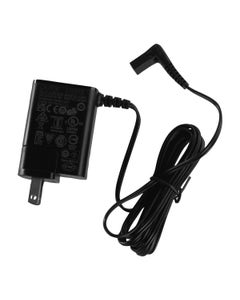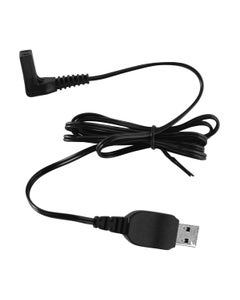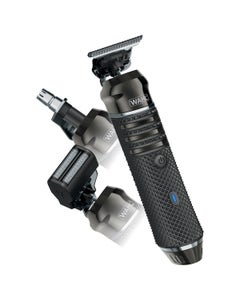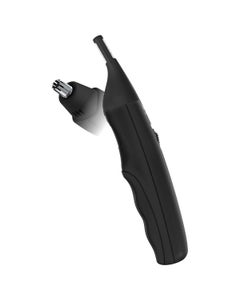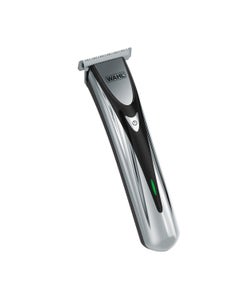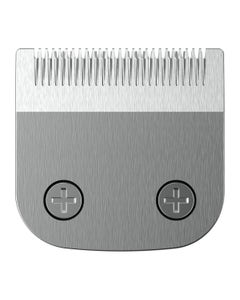

How to Brush Your Dog
No aspect of home dog grooming requires as much devotion as brushing. Regular brushing keeps your pet’s hair clean and tangle-free, while keeping your dog's skin healthy by stimulating blood flow, removing dead hair and distributing natural oils.
What Dog Brush is Best for Your Pet?
Before we dig deeper into how to brush your dog, let’s talk about getting the right tool for the job. Wahl has a variety of pet brushes. Choose a brush that best suits the breed and texture of your pup’s coat. A general rule: use a bristle brush or a quality 2-in-1 comb for short coats and a slicker brush for dense coats, long silky coats, wavy or curly coats. Brush up below!
What is a Bristle Brush?


A good all-around double-sided brush for various coat types. One side features a stainless-steel pin design to remove loose fur while stimulating the skin and the other side is made of soft nylon to brush through the hair while distributing natural oils for a shiny coat.
What is a Slicker Brush?


It is ideal for removing mid- to top-level fur and hair on medium- and long-coated dogs. The thin stainless steel wire pins easily work through the coat to loosen up and remove excess hair.
What is a Finishing Comb?


This brush is great for removing tangles and excess outer-coat hair thanks to sturdy rotating stainless-steel pins. A must-have tool for every dog owner who wants to get a grip on shedding.
What is a Deshedding Rake?


Once you have detangled and brushed your dog, use the finishing comb to smooth out the coat and keep it looking good. Its long stainless-steel pins also work well for light detangling.
Brushing Your Dog Step-by-Step
1. Calm or Tire Out Your Pup
If you bathe your dog before grooming, ensure his/her fur is dry. Depending on the breed and temperament of your pup, you might want to take him/her for a short walk to burn off extra energy. Before brushing, speak in a soothing voice and praise your dog for sitting still.
2. Introduce the Brush
Using the brush guide above, ensure you have the suitable Wahl Bristle Brush or Slicker Brush and let the pup see it and sniff it before you begin to comb through your dog's fur, using plenty of praise and positive reinforcement.
3. Start Brushing
Gently brush your dog's coat from front to back. For best results, brush all the way down to the skin. Offer treats as you reposition your dog so you can get to more areas.
4. Brush Regularly
Now you have the right tool, and a positive process that suits both you and your pet, make a habit of regular brushing. See below for a guide on frequency.
What You'll Need
Questions You Are Asking:
Should I Brush My Dog Regularly?
Yes. Regular brushing is essential, particularly around seasonal changes, when shedding most often occurs.
How Often Should I Brush My Dog?
It varies by breed and pup personality but there are general rules of thumb.
Smooth, Short Coat. Examples: Great Danes. Dachshunds. Bulldogs. Brush at least once per week with a Bristle Brush or a quality 2-in-1 comb. The bristle brush can also be used on dogs with “double coats” (a soft undercoat and weather-resistant outer coat), such as Collies and Huskies.
Longer, Dense Coat. Examples: Golden Retrievers. Border Collies. Goldendoodles. Brush several times a week with a wire Slicker Brush. If your dog has a long or silky coat, daily brushing is recommended with a steel pin brush or slicker brush. If he has a wavy or curly coat, use a fine, curved-wire slicker brush several times per week (daily, if time permits). Wahl has all the pet grooming products you’ll need.
What Are the Benefits of Brushing my Dog?
Regular brushing helps make a dog’s coat softer, cleaner, and less prone to heavy shedding. It can also help to root out fleas or parasites, which often cause skin irritation and more shedding. Not only does it help to make your pup look their best, but it is also a great bonding exercise.
Does Brushing Your Dog Help with Shedding?
Yes, bathing, brushing, feeding, and even oiling your dog can help with shedding. Go here to get the scoop.
Why Do Dogs Shed?
Shedding is normal. It is a way to get rid of old, unwanted, or damaged hair. In winter dogs grow heavier coats to help keep them warm and shed in summer to stay cool. Excessive shedding can indicate seasonal allergies, infections, parasites, or poor diet.

 India (English)
India (English)
 Middle East and Africa (English)
Middle East and Africa (English)
 South Africa (English)
South Africa (English)
 Australia (English)
Australia (English)
 Japan (日本語)
Japan (日本語)
 South East Asia (English)
South East Asia (English)
 Singapore (English)
Singapore (English)
 Europe (English)
Europe (English)
 United Kingdom (English)
United Kingdom (English)
 Argentina (Español)
Argentina (Español)
 Brazil (Portuguese)
Brazil (Portuguese)
 Colombia (Español)
Colombia (Español)
 Latin America (Español)
Latin America (Español)
 México (Español)
México (Español)
 Chile (Español)
Chile (Español)
 Peru (Español)
Peru (Español)
 Canada (English)
Canada (English)






